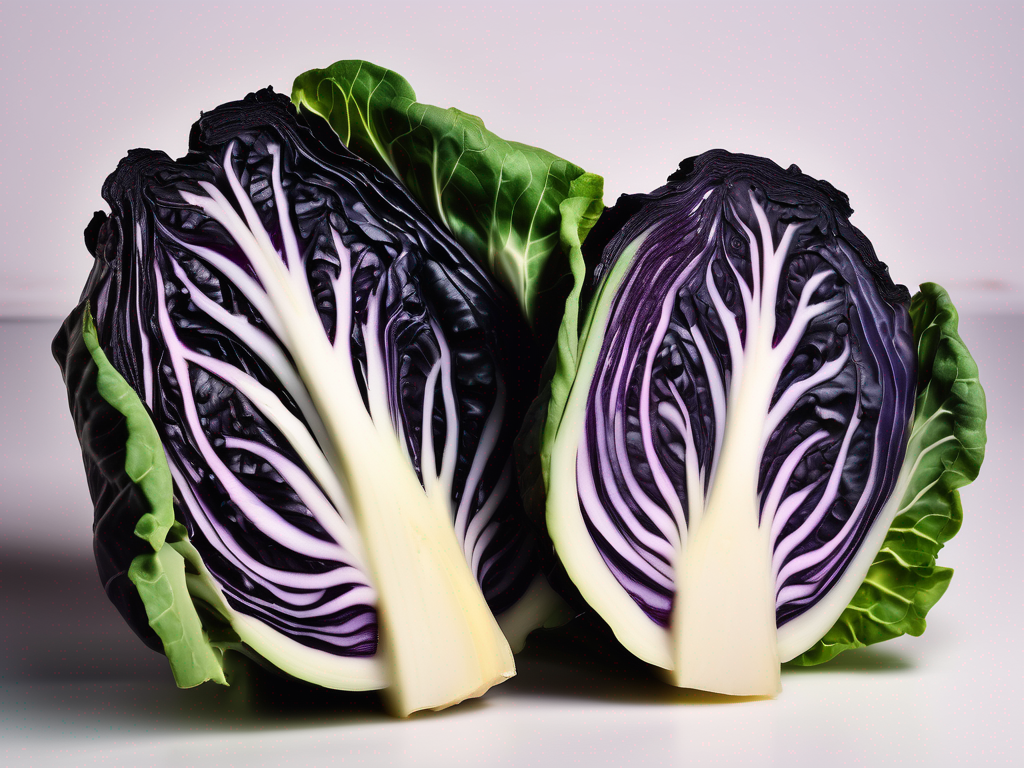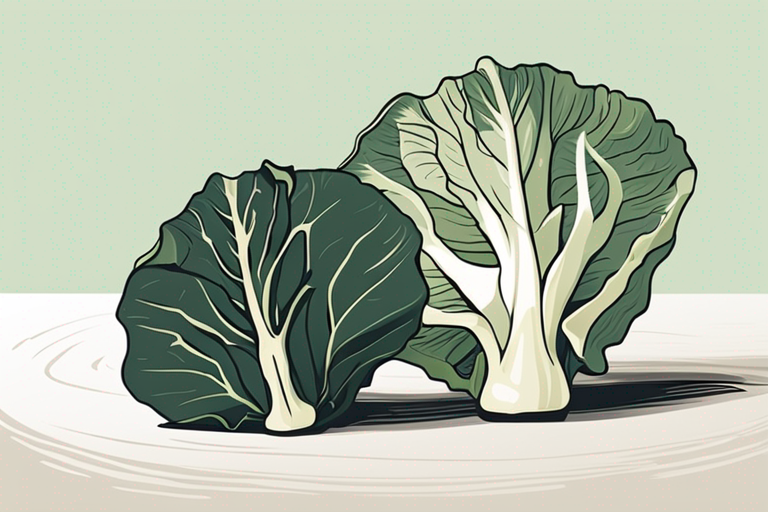
Is Your Black Cabbage Still Good to Eat?
Get Your Free Food Safety Cheat Sheet
30 most common foods with instant answers. Print it and stick it on your fridge—completely free!
Is Your Black Cabbage Still Good to Eat?
Black cabbage, also known as cavolo nero or Tuscan kale, is a nutritious and flavorful leafy green that is a staple in many Mediterranean dishes. However, like any produce, black cabbage can spoil if not stored properly. In this blog post, we will discuss how to tell if your black cabbage is still good to eat, and provide you with practical tips on food safety and storage. (Black cabbage)
Signs of Spoilage in Black Cabbage
When it comes to determining if your black cabbage is still safe to eat, there are a few key signs of spoilage to look out for:
1. Visual Inspection
- Discoloration: Check for any dark spots, mold, or slimy patches on the leaves.
- Wilting: Black cabbage leaves should be crisp and firm. If they are wilted or limp, it may indicate spoilage.
- Yellowing: Yellowing leaves are a sign that the black cabbage is past its prime.
2. Smell
- Off Odor: If your black cabbage has a strong, unpleasant odor, it is best to discard it.
3. Texture
- Sliminess: If the leaves feel slimy or sticky to the touch, it is a clear indication of spoilage.
4. Taste
- Bitterness: Spoiled black cabbage may have a bitter or off taste.
Proper Storage of Black Cabbage
To extend the shelf life of your black cabbage and keep it fresh for longer, follow these storage tips:
1. Refrigeration
- Wrap: Place black cabbage in a plastic bag or wrap it in a damp paper towel before storing it in the refrigerator.
- Temperature: Store black cabbage in the crisper drawer of your fridge at a temperature of around 32-40°F (0-4°C).
2. Freezing
- Blanching: To freeze black cabbage, blanch the leaves in boiling water for a few minutes, then transfer them to an ice bath before freezing.
- Air-tight Container: Store blanched black cabbage in an airtight container or freezer bag for up to 12 months.
Food Safety Tips
When handling black cabbage, or any other produce, it is essential to follow food safety guidelines to prevent foodborne illnesses. Here are some important tips to keep in mind:
1. Wash Thoroughly
- Rinse: Before consuming or cooking black cabbage, rinse the leaves under cold running water to remove any dirt or contaminants.
2. Separate from Raw Meat
- Cross-Contamination: Keep black cabbage away from raw meat, poultry, and seafood to avoid cross-contamination.
3. Use Clean Utensils
- Cutting Boards and Knives: Use separate cutting boards and knives for black cabbage and other food items to prevent the spread of bacteria.
4. Cook Thoroughly
- Safe Cooking Temperature: Ensure that black cabbage is cooked to the recommended safe temperature to kill any harmful bacteria.
Conclusion
In conclusion, black cabbage is a versatile and nutritious vegetable that can be enjoyed in a variety of dishes. By knowing how to identify signs of spoilage, practicing proper storage techniques, and following food safety guidelines, you can ensure that your black cabbage remains fresh and safe to eat. Remember to always use your senses of sight, smell, and touch to determine the quality of your black cabbage before consuming it. Enjoy this delicious leafy green in your meals while keeping food safety a top priority.
For more information on [black cabbage](/food/black cabbage) and other food safety tips, visit our website. Stay safe and enjoy your meals! (Black cabbage)

Authoritative Food Safety References
These agencies and university labs inform every tip and health precaution we publish.
USDA FoodKeeper – Cold Storage Guidelines
Official refrigerator, freezer, and pantry timelines maintained by the U.S. Department of Agriculture.
Visit USDA FoodKeeperFDA Produce Safety Rule & Grower Guidance
Field-to-fridge handling practices that prevent contamination of fruits, vegetables, and leafy greens.
Visit FDA Produce SafetyCDC Foodborne Illness Prevention Hub
Surveillance-backed guidance on pathogens, symptoms, and steps to reduce foodborne illness risk.
Visit CDC Food SafetyUC Davis Postharvest Technology Center
University research detailing optimal storage atmospheres for produce after harvest.
Visit UC Davis PostharvestPenn State Extension – Home Food Preservation & Safety
Peer-reviewed extension bulletins on safe canning, chilling, and reheating practices.
Visit Penn State ExtensionHow can I tell if black cabbage is still good to eat?
Can I store black cabbage in the refrigerator?
Can I freeze black cabbage for later use?
What are some ways to cook black cabbage?
Get Your Free Food Safety Cheat Sheet
30 most common foods with instant answers. Print it and stick it on your fridge—completely free! Want more? Upgrade to the complete guide with 70+ foods.
Scan your food directly and get instant safety info using our AI-powered camera feature.